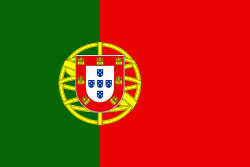Águeda Municipality (Águeda)
 |
 |
Águeda has been a municipal seat since 1834 and has had official city status since 1985. It was built on a foundation of successive Celt, Turduli and Lusitanian inhabitants since 370 BC.
Ancient occupation of this area dates back to the Bronze Age, marked by diverse megalithic monuments, including the archaeological site at Cabeço do Vouga, an important Roman military fortification along routes from Olissipo (Lisbon) to Bracara Augusta (Braga).
In the 9th Century, Águeda was a prosperous borough, with stable commerce and an active port that supported local and regional businesses. It was mentioned in documents from 1050 to 1077, by its primitive name Casal Lousado, or by its anglicized forms: Anegia, Agatha and Ágada; by the 9th Century, this settlement was referred to as Ágata. In a document dated 1050, there is mention of several villages situated within the current borders, many with names originating from Arab languages.
Águeda never achieved a foral during the Middle Ages, in contrast to its neighbors, it was considered regal lands and dominions of the monasteries of Lorvão and Vacariça. It functioned as an ancillary center on the road to Santiago de Compostela, and the river-side village was most certainly visited by Queen Isabel (S. Elizabeth of Portugal) in 1325, during her customary pilgrimages to the religious center.
A new phase of settlement occurred after the establishment of the Kingdom of Portugal, from the 11th–12th century: although its inhabitants prospered, and had many privileges, their representatives from Aveiro in the Cortes of Évora (1451), never requested a foral declaration. King D. Manuel I included Águeda in a general foral granted to Aveiro, in 1515, but was only, later, provided a separate charter.
In 1834, Águeda ascended to the category of municipal seat, as a consequence of the Portuguese Liberal Revolution, when major administrative reforms were initiated. Its important political place and strategic politico-military position allowed Águeda to support military troops during the second French Invasion, when it functioned as military hospital. Resulting from the administrative reform, Águeda began its political career in the shadow of great change, and many of its citizens were important land reformers. The municipality of Águeda was established on 31 December 1853, and integrated many older concelhos of medieval origins long since extinct, including Aguada de Cima, Castanheira do Vouga and Préstimo.
As a frontier city located between the sea and land, it occupies a privileged position, serviced by both railroads and an expanding road network. These advancements allowed the economic and social development of the region and placed Águeda in an important position, resulting in its growth and development. On 14 August 1985, Águeda was elevated to the category of city by law.
Map - Águeda Municipality (Águeda)
Map
Country - Portugal
 |
 |
| Flag of Portugal | |
One of the oldest countries in Europe, its territory has been continuously settled, invaded and fought over since prehistoric times. The territory was first inhabited by pre-Roman and Celtic peoples who had contact with Phoenicians, ancient Greeks and Carthaginians. It was later ruled by the Romans, followed by the invasions of Germanic peoples and the Islamic invasion by the Moors, whose rule was eventually expelled during the Reconquista. Founded first as a county of the Kingdom of León in 868, gained its independence as the Kingdom of Portugal with the Treaty of Zamora in 1143.
Currency / Language
| ISO | Currency | Symbol | Significant figures |
|---|---|---|---|
| EUR | Euro | € | 2 |
| ISO | Language |
|---|---|
| PT | Portuguese language |

















